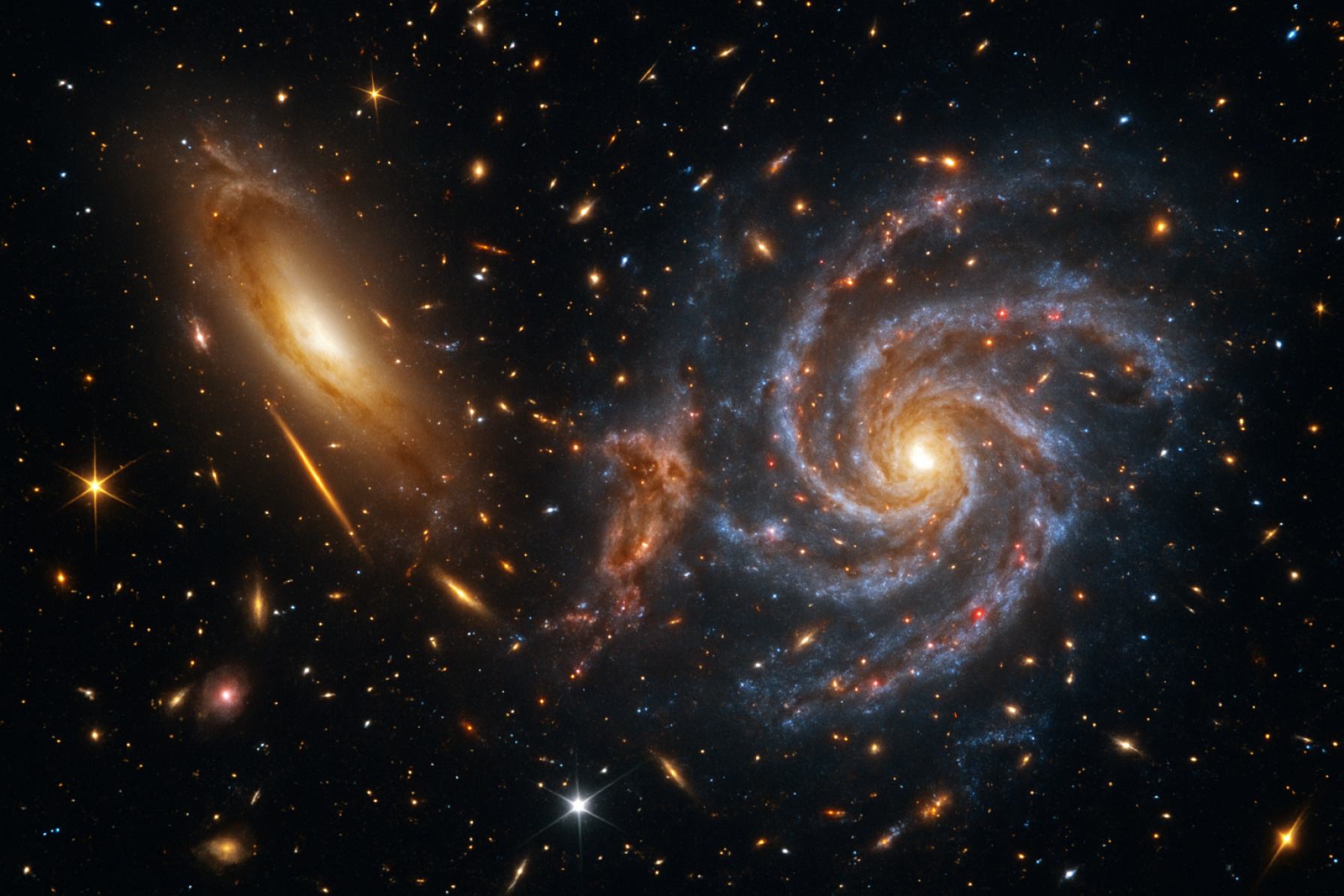James Webb Telescope Reveals Universe’s Wild Early Days—and It’s Nothing Like We Imagined
The James Webb Space Telescope upends decades-old ideas about galaxy evolution, revealing a chaotic, dynamic universe with never-before-seen detail.
- 1,700 galaxy groups discovered in latest JWST deep survey
- 12+ billion years of cosmic evolution captured in stunning new data
- Largest, deepest survey of galaxy groups ever conducted
For decades, what we thought we knew about galaxy formation was simple: a calm, gradual process, galaxies drifting and growing, in stately cosmic order. But the latest revelations from the James Webb Space Telescope (JWST) have upended that narrative—painting a picture of galactic pandemonium instead.
Scientists now see the early universe as a turbulent crucible, with galaxies forming rapidly, colliding, merging, and transforming in wild, unpredictable bursts. Thanks to JWST’s unprecedented ability to catch ancient, faint light, astronomers are peering back over 12 billion years, straight into the universe’s frenetic teenage years.
This colossal project resulted in the most detailed “family album” of galaxy groups to date, newly published in the journal Astronomy & Astrophysics. Far from isolated islands, galaxies are shown to be deeply interconnected—ranging from duos to communities bound by gravity in the cosmic web.
Q: What Did the James Webb Space Telescope Uncover?
The JWST’s latest survey delivered a record-breaking 1,700 galaxy groups—enormous clusters stretching across the early universe. Led by Dr. Ghassem Gozaliasl, the research team pieced together how galaxies transformed over eons, finding evidence that supports a chaotic, stop-and-go growth.
The images revealed galaxies not as elegant spirals, but as unruly, clumpy shapes, bustling with wild energy. Cosmic fireworks lit up these youthful galaxies with star-forming regions, painting a scene of intense birth and destruction—a far cry from the ordered galaxies we see today.
Q: How Has Our Understanding of Galaxy Evolution Changed?
Before JWST, most theories—many from NASA missions—depicted cosmic development as slow and smooth. Now, it’s clear the universe grew up in dramatic fits, not gradual steps. These early galaxian communities constantly merged, collided, and cannibalized each other, gathering strength from chaos.
Galaxies eventually matured. Roughly a billion years after the initial bursts, clumpy and chaotic forms gave way to the familiar spirals and ovals. Star factories slowed, as galaxies used up their gas, and activity simmered.
How Do Dark Matter and Black Holes Shape the Cosmos?
Much of what drives these transformations remains invisible. Dark matter weaves the scaffolding holding galaxy groups together, while supermassive black holes at galactic centers regulate when galaxies can birth new stars.
Without the tug of dark matter, galaxies would fly apart. Black holes shut off star formation as they heat cosmic gas, impacting a galaxy’s fate. JWST is now helping astronomers map these unseen influences across cosmic history in real time.
How Can You Explore the Universe’s Secret History?
- Follow up on the latest JWST findings at webb.nasa.gov.
- Delve deeper into the cosmic web with resources from esa.int (European Space Agency).
- Stay updated on galaxy research at Nature and Science Magazine.
Our view of the universe has shifted from serene to exhilaratingly dynamic. The new evidence from JWST lets us connect the dots between the first cosmic chaos and the spectacular galaxies that light our modern night sky.
Don’t Miss the Next Space Breakthrough!
- Bookmark official resources for the latest Webb discoveries
- Read summary reports from major scientific journals
- Watch virtual telescope tours from NASA and ESA
- Share these exciting cosmic revelations with fellow space enthusiasts
